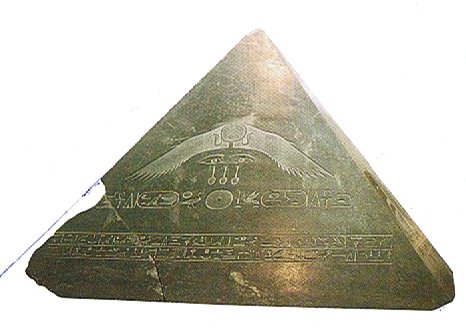71 at the figure in front of the threatening 9 'teeth of obsidian and greenstone' could allude to the pace in which time erodes due to the precession, viz. 26000 / 366 = 71 years per day:
... My son, said Makea tutara one evening at dusk, when they were sitting outside the house, I have heard from your mother and from others that you are brave and capable, and that in everything you have undertaken in your own country you have succeeded. That says a great deal for you. But I have to warn you: now that you have come to live in your father's country you will find that things are different. I am afraid that here you may meet your downfall at last. 'What do you mean?' said Maui. 'What things are there here that could be my downfall?' 'There is your great ancestress Hine nui te Po', said Makea, gravely. And he watched Maui's face as he mentioned the name of Great Hine the Night, the daughter and the wife of Tane and goddess of death. But Maui did not move an eyelid. 'You may see her, if you look', Makea went on, pointing to where the sun had gone down, 'flashing over there, and opening and closing, as it were'. His thoughts were on death as he spoke. For it was the will of Hine nui, ever since she turned her back on Tane and descended to Rarohenga, that all her descendants in the world of light should follow her down that same path, returning to their mother's womb that they might be mourned and wept for. 'Oh, nonsense', said Maui affectionately to the old man. 'I don't think about that sort of thing, and you shouldn't either. There's no point in being afraid. We might just as well find out whether we are intended to die, or to live forever.' Now Maui had not forgotten what his mother once said about Hine nui te Po: that he would some day vanquish her, and death would then have no power over men. He remembered this now, and was not moved by his father's fears. But Hine nui was the sister of Mahuika, and she knew of Maui's dangerous trickery at the abode of fire, and was resolved to protect her other descendants from further mischief of this kind. 'My child', said Makea now in a tone of deep sorrow, 'there has been a bad omen for us. When I performed the tohi ceremony over you I missed out a part of the prayers. I remembered it too late. I am afraid this means that you are going to die.' 'What's she like, Hine nui te Po?' asked Maui. 'Look over there', said Makea, pointing to the ice-cold mountains beneath the flaming clouds of sunset. 'What you see there is Hine nui, flashing where the sky meets the earth. Her body is like a woman's, but the pupils of her eyes are greenstone and her hair is kelp. Her mouth is that of a barracuda, and in the place where men enter her she has sharp teeth of obsidian and greenstone' ...
θ in Andromeda - the woman in the east where Sun is born anew every year - is the highest of the triplet of stars on her right shoulder, and theta may have meant this was the apex, beyond which Moon would not allow the Old Sun cycle to continue (beyond 13 * 29½ = 383½ nights). In the night and close to the Full Moon was the September equinox.
The stars moved slowly ahead with the precession and moving ahead in the text we should therefore find the earlier heliacal stars which the Sun once upon a time visited at the northern spring equinox. However, at the time of Bharani the last day of the Old Sun cycle could have been "February 23 (a day which later in Roman times was named Terminalia). This point in the calendar could perhaps reflect an understanding of how precession had moved the beginning of the year ahead since the time of the Babylonians. 54 ("February 23) - 31 (JANUARY 31) = 23. But JANUARY could then have been the last month of the old year for the Babylonians. Possibly they used the nakshatra method and found Apami-Atsa (θ Virginis) close to the Full Moon, corresponding in Babylonian times to day 214 (AUGUST 2) - i.e. 'a day for all hearts'. ... Apami-Atsa ('Child of Waters', θ Virginis) at 13h maybe should be contrasted with Apam Napat ('Grandson of Waters'): ... θ ... is on the front of the garment, below the girdle ... Moderns have no name for it, but in the Surya Siddhanta it was Apami-Atsa, the Child of the Waters ... ... Apam Napat is an eminent figure of the Indo-Iranian pantheon. In Hinduism, Apām Napāt is the god of fresh water, such as in rivers and lakes. In Zoroastrianism, Apąm Napāt is also a divinity of water ... Apām Napāt in Sanskrit and Apąm Napāt in Avestan mean 'grandson of waters' ... Sanskrit and Avestan napāt ('grandson') are cognate to Latin nepōs and English nephew, but the name Apām Napāt has also been compared to Etruscan Nethuns and Celtic Nechtan and Roman Neptune. In Yasht 19 of the Avesta Apąm Napāt appears as the Creator of mankind. Here, there is an evident link between the glory of sovereignty (Khvarenah) and Apąm Napāt who protects Khvarenah as the royal glory of Iranian kings. Apām Napāt is sometimes, for example in Rigveda book 2 hymn 35 verse 3, described as a fire-god who originates in water ... The reference to fire may have originally referred to flames from natural gas or oil seepages surfacing through water, as in a fire temple at Surakhany near Baku in Azerbaijan ... There is a conjecture that the word 'naphtha' came (via Greek, where it meant any sort of petroleum) from the name 'Apampat' ...
|
||||||||||||||||||||||||||||||||||||||||||||||||||||||||||||||||||||||||||||||||||||||||||||||||||||||||||||||||||||||||||||||||||||||||||||||||||||||||||||||||||||||||||||||||||||||||||||||||||||||||||||||||||||||||||||||||||||||||||||||||||||||||||||||||||||||||||||||||||||||||||||||||||||||||||||||||||||||||||||||||||||||||||||||||||||||||||||||||||||||||||||||||||||||||||||||||||||||||||||||||||||||||||||||||||||||

















